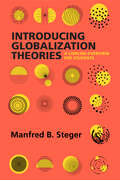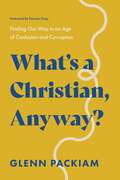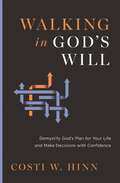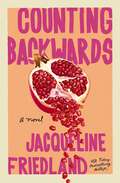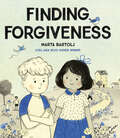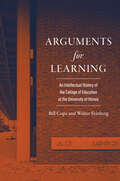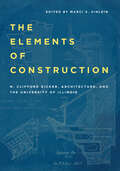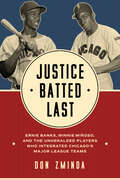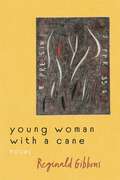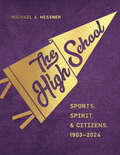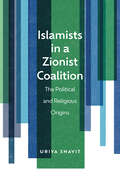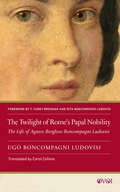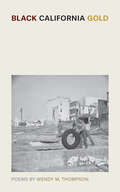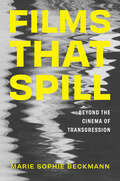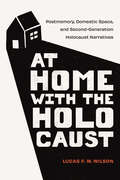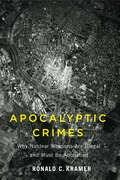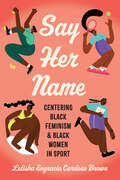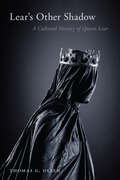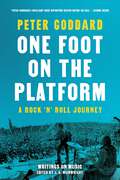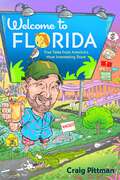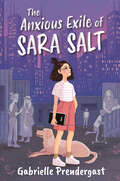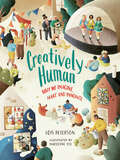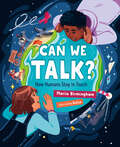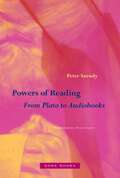- Table View
- List View
Introducing Globalization Theories: A Concise Overview for Students
by Prof. Manfred B. StegerSince the explosion of the buzzword "globalization" in academic and public discourse more than thirty years ago, theoretical explorations of worldwide interconnectivities and mobilities have proliferated across major academic disciplines. Introducing Globalization Theories is a short yet comprehensive primer to major globalization theories from the 1990s to the present. This accessible volume explains how globalization frameworks have been assembled by influential thinkers who employ different modes of inquiry. Short summaries, illustrations, and a supplemental guide to further reading equip students with tools to assess the strengths and weaknesses of each theory. Intersecting with relevant contemporary themes such as inequality and ecology, the book also highlights and features postcolonial and Indigenous globalization theories that challenge Western-centric views and point to a more equitable world.
What's a Christian, Anyway?: Finding Our Way in an Age of Confusion and Corruption
by Glenn PackiamIn an age when Christianity has been corrupted and co-opted by cultural forces and personal agendas, pastor and theologian Glenn Packiam shows how an ancient Creed can save the modern church--and might just save your faith.The Church today has lost its way. We've pursued the wrong priorities, put our hope in personalities, and elevated popularity over spiritual maturity. And it's not just the Church that's lost; we are too. As culture wars rage and competing voices argue, many Christians are left asking a basic question, What's a Christian, anyway?But there's hope. The church has been here before, and our spiritual ancestors crafted a powerful resource to help us find our way: the Nicene Creed. Readers who take this journey with Packiam willdiscover how the Creed--born in an ancient time of controversy, confusion, and disunity much like today--is not just a statement of beliefs, but a rope to lead us home; experience an invitation into the mystery and wonder of God through these ancient words; andrediscover a path to becoming faithful witnesses to the way of Jesus as we learn to live into the Creed's beautiful story, stunning hope, and powerful vision of what a Christian is. The world yearns for Christ's joy, peace, and hope, but the gospel is only believable if Christians live like it's true. Join this adventure into the heart of authentic Christianity, and rediscover for yourself the fresh, timeless power of our Creed, returning to the living heart of what it means to be a Christian.
Walking in God's Will: Demystify God's Plan for Your Life and Make Decisions with Confidence
by Costi W. HinnA guide to demystifying God's will for your life and following it with great joy.Do you feel paralyzed by major life decisions because you're afraid of missing God's plan for your life? Do you wonder how God's will works in tandem with your choices, experiences, and desires?In this timeless guidebook, pastor and Bible teacher Costi Hinn offers readers an expansive map of what Scripture says about God's will. As you read, you'll learn to overcome common decision-making cripplers, distinguish God's voice from your own, and experience peace, joy, and confidence with each life choice, big or small.Whatever life stage you're in, Costi Hinn will come alongside and help you:Escape the chronic stress of uncovering God's perfect willFind peace in God's providence as you make tough decisionsDiscover freedom in Christ during hardship and sufferingLearn what Scripture says about God's purpose for you Whether you're praying through a specific decision or simply curious about how God's providence works, Walking in God's Will is the book for you.
Counting Backwards: A Novel
by Jacqueline Friedland"Jacqueline Friedland's ripped-from-the-headlines story is an Erin Brockovich for our times." --Jill Santopolo, New York Times bestselling author of The Light We Lost". . . a riveting, compelling story--but it's also an important one, reminding us that history's darkest aspects can echo forward into our present day and that there is so much work left to do in the fight for freedom and equality." --Kelly Rimmer, New York Times bestselling author of The German WifeA routine immigration case, a shocking legacy. Jessa Gidney's quest for justice draws her into the heart of an abhorrent conspiracy. As she uncovers her personal ties to a heartbreaking past, her life takes a dramatic turn, in this emotionally riveting novel inspired by true events.New York, 2022. Jessa Gidney is trying to have it all--a high-powered legal career, a meaningful marriage, and hopefully, one day, a child. But when her professional ambitions come up short and Jessa finds herself at a turning point, she leans into her family's history of activism by taking on pro bono work at a nearby ICE detention center. There she meets Isobel Pérez--a young mother fighting to stay with her daughter--but as she gets to know Isobel, an unsettling revelation about Isobel's health leads Jessa to uncover a horrifying pattern of medical malpractice within the detention facility. One that shockingly has ties to her own family.Virginia, 1927. Carrie Buck is an ordinary young woman in the center of an extraordinary legal battle at the forefront of the American eugenics conversation. From a poor family, she was only six years old when she first became a ward of the state. Uneducated and without any support, she spends her youth dreaming about a different future--one separate from her exploitative foster family--unknowing of the ripples her small, country life will have on an entire nation.As Jessa works to assemble a case against the prison and the crimes she believes are being committed there, she discovers the landmark Supreme Court case involving Carrie Buck. Her connection to the case, however, is deeper and much more personal than she ever knew--sending her down new paths that will leave her forever changed and determined to fight for these women, no matter the cost.Alternating between the past and present, and deftly tackling timely-yet-timeless issues such as reproductive rights, incarceration, and society's expectations of women and mothers, Counting Backwards is a compelling reminder that progress is rarely a straight line and always hard-won. A moving story of two remarkable women that you'll remember for years to come.
The Wild Horse Effect: Awe, Well-Being, and the Transformative Power of Nature
by Chad HansonCombining stunning imagery with insights from the new science of awe and contemplative practices, The Wild Horse Effect reminds us that stepping away from our modern lives and reconnecting with the natural world is essential to our sense of peace, purpose, and well-being.This unique nature book invites you into a world seldom experienced by humans through breathtaking imagery of wild horses on the open plains. In addition, author Chad Hanson delves into current research and lays out the myriad mind-body benefits of spending time in natural spaces. "Try this" sidebars throughout offer simple ways to get outside, practice mindfulness, and discover more wonder in your every day, no matter where you live. Handsomely designed to evoke the allure of the West and brimming with images that range from austere to heartwarming to jubilant, this transporting book will appeal to animal and nature lovers, photography enthusiasts, and anyone interested in improving their well-being through time spent outdoors.STEP INTO NATURE: Through beautiful photography of sprawling landscapes, dusky skies, wild mustangs, and galloping stallions, this book invites readers to get lost in its pages and travel to wild, faraway places without ever leaving home. This celebration of wild horses is also a stirring call to action to protect these majestic animals and beautiful landscapes. WELL-BEING AND STRESS MANAGEMENT: Forest bathing meets wildlife photography in this one-of-a-kind book. Natural landscapes and wildlife inspire a sense of reverence, and experiencing a sense of reverence is beneficial for our mental and physical health. This book paves a path to greater well-being through nature by sharing scientific research, insightful reflections, and accessible mindfulness practices. HANDSOME GIFT: This gorgeous hardcover volume filled with breathtaking nature photography is a great Father's Day gift and the perfect present for family and friends with a range of interests, from the mindfulness practitioner to the equestrian, the flannel-wearing outdoorsman to the Yellowstone fan, the nature lover to the cowboy enthusiast.Perfect for: Horse lovers and equestrians Animal lovers and anyone interested in wildlife conservation People who live in or travel to the western United States Forest bathers, meditators, and mindfulness practitioners Fans of nature photography People who enjoy Nature Meditations Deck, Forest Bathing, or Chronicle Books’ Pocket Nature series
Finding Forgiveness
by Marta BartoljFrom the creator of the Ezra Jack Keats Honor-winning picture book Every Little Kindness, this powerful and positive wordless story explores the all-important theme of forgiveness.When a young boy’s beloved bird flies away, the only thing harder than tracking it down is forgiving the friend who let it escape. As he searches the town from sidewalk to treetop, what he finds instead of his lost pet is that people make mistakes all the time. But it might take his own mistake to discover the truth: even when all seems lost, forgiveness is a gift that comes back to you. Told entirely in wordless illustrations with pops of color for every moment of forgiveness, this simple yet powerful story can be enjoyed by young readers, families, classmates, and friends. For anyone who has had a fight or experienced conflict with someone they care about—something we all go through—this gentle picture book shares comfort and timeless wisdom.WHY FORGIVENESS MATTERS: Apologies are hard to give, and forgiveness is even harder, but each genuine moment of sincerity can soothe hurt feelings. This heartwarming book demonstrates that unintentional mistakes are a part of everyday life and that choosing to forgive is a form of kindness. TEACHING VALUES: Created by award-winning Slovenian artist Marta Bartolj, this universal story furthers the message in her debut book, Every Little Kindness. It demonstrates how to build on kind acts by pairing a sincere apology with genuine forgiveness. “A beautifully illustrated story about one of the most challenging human experiences—learning that forgiveness is the kindest act of all. No words needed.” —Alison Oliver, author-illustrator “This book is a silent journey that follows one boy and his tiny bird as they discover a big new understanding.” —Cynthia Alonso, author-illustratorPerfect for: Parents and caretakers looking for books about forgiveness Classroom book for teachers and educators Anyone looking for a sweet, heartwarming children’s book Fans of wordless picture books Readers of Every Little Kindness, Heartstring, Enemy Pie, and How to Apologize
Arguments for Learning: An Intellectual History of the College of Education at the University of Illinois
by Bill Cope Walter FeinbergAlmost every educational idea worth a thought has been considered at the University of Illinois, and anything worth trying has been tested. In this history of ideas, Bill Cope and Walter Feinberg chronicle the intellectual lives of education thinkers at the university while tracking the development of educational ideas and practices in general. Cope and Feinberg draw on conversations, narratives, and archival research that reveal how different generations explored their role in defining and carrying out the College’s multifaceted mission. Their account raises critical questions about the character of learning, the aims of teaching, and the nature of teaching as a profession. At the same time, the authors address issues that range from the role of schools in fostering individual and collective identity to the introduction of computer-mediated and online learning. Cope and Feinberg examine changes in self-understanding about fundamental ideas and chart how the College evolved from its original narrow mission of training children’s schoolteachers to embracing global perspectives. A wide-ranging portrait of an institution, Arguments for Learning uses the School of Education to tell the stories of thinkers dedicated to the idea that education can change the world for the better.
The Elements of Construction: N. Clifford Ricker, Architecture, and the University of Illinois
by N. Clifford RickerA pioneer of architecture education in the United States, N. Clifford Ricker notably taught with an emphasis on construction and shop practice in his teaching. Marci S. Uihlein edits and elaborates on The Elements of Construction, the text on building materials that Ricker wrote and used in his teaching, but never published. The book is a window into the expanding possibilities of the late nineteenth-century, as Ricker continually revised The Elements of Construction to keep up with advances taking place in architecture, materials, and construction technology. In addition to providing the full text, Uihlein and the contributors trace Ricker’s career and delve into his practice of teaching. Subject experts explore specific topics. Thomas Leslie surveys contemporary construction practices in Chicago. Tom F. Peters considers Ricker’s writings in the context of the time while Rachel Will looks at masonry know-how and testing. Donald Friedman examines the teaching of iron and steel construction. An illuminating look at a field and a legacy, The Elements of Construction rediscovers a figure that shaped the teaching of architecture and trained a generation that forever changed Chicago.
Justice Batted Last: Ernie Banks, Minnie Miñoso, and the Unheralded Players Who Integrated Chicago's Major League Teams
by Don ZmindaOn May 1, 1951, Orestes “Minnie” Miñoso took the field for the Chicago White Sox and broke the color line for Chicago major league baseball. Ernie Banks integrated the Chicago Cubs two years later. The future Hall of Famers began their Chicago baseball careers against the backdrop of a 1951 race riot in suburban Cicero, where a white mob abetted by local police attacked a building that had rented to Black tenants. Don Zminda’s account looks at these interconnected events alongside the little-known chronicle of Chicago’s slow track to integrating major league baseball. By the early 1950s, the Cubs and White Sox organizations had become rich in Black and Afro-Latino stars and talented prospects. Unlike Miñoso and Banks, however, most of these minor leaguers never advanced to the majors or, if they did, it was for little more than a cup of coffee. Zminda also profiles these players, from Charles Pope, the Cubs’ first Black signee, to larger-than-life fireballer Blood Burns. Essential and dramatic, Justice Batted Last uses the lives and careers of two Chicago legends to tell a story of integration on and off the diamond.
Young Woman with a Cane: Poems
by Reginald GibbonsYoung Woman with a Cane explores the social, cultural, and personal dimensions of feeling, experience, and thought. This new collection by Reginald Gibbons ranges from nature and ecological crises to human conflicts of migration, self-determination, ancient war, and the corruption of political mores. In language intensified by strong rhythms, figures, and bounteous vocabulary, the book presents short lyrics alongside satires, laments, and witness, with subjects moving from elk in the Dakotas to underlings supporting knavish power, from celebrating words as a kind of phonetic music to brief narratives of interaction and consciousness. Above all, Gibbons’s poems fluently and inventively articulate both directness and nuance. The long prose poem that gives the book its title and other pieces evoke the historical depths, echoes, and precedents of present-day life. Gradually the book provides energetic metaphorical and notional riffs on violence, on wars both past and recent and ongoing, as it satirizes the corrupted politics of our age. Yet it also presents tender, sometimes melancholic treatments of everyday life. With a panoply of poetic forms, marked throughout by a lively pleasure in the language and the lines, Gibbons conjures an extensive range of story and experience, feeling and thought.
The High School: Sports, Spirit, and Citizens, 1903-2024 (Critical Issues in Sport and Society)
by Michael A. MessnerHigh school yearbooks provide both a vivid snapshot of student life and a reflection of what the adults in the community valued the most. For instance, athletics are often covered more than academics, and boys’ sports routinely receive more attention than girls’ sports. But how have those values changed over time? In The High School, acclaimed sociologist Michael A. Messner reads through 120 years of El Gabilan, the yearbook from his own alma mater, Salinas High School in California, where his father taught and coached. Treating the yearbooks as a historical archive, Messner makes surprising discoveries about the school he thought he knew so well. For example, over fifty years before Title IX, the earliest yearbooks gave equal spotlights to boys’ and girls’ athletics, while the cheerleaders were all boys. Tracing American life and culture from 1903 to 2024, Messner illuminates shifts in social practices at his high school that reflect broader changes in American culture across the twentieth century. The High School spotlights how the meanings and iconography of certain activities have changed radically over the decades, even as the “sports spirit complex”—involving athletes, cheerleaders, band members, and community boosters—has remained a central part of the high school experience. By exploring evolving sports cultures, socioeconomic conditions, racial demographics, and gender norms, Messner offers a fresh perspective on a defining feature of American teenage life.
Islamists in a Zionist Coalition: The Political and Religious Origins
by Uriya ShavitIslamists in a Zionist Coalition: The Political and Religious Origins explores the decision made in 2021 by the United Arab List, the political arm of the Southern Branch of the Islamic Movement in Israel (SIM), to join the Israeli Zionist coalition for the first time, and specifically how and why it was possible for an Islamist movement to become the enabler of a Zionist government without losing the support of its religious scholars or political base. Through analyses of hundreds of books, columns, fatwas, media interviews, and posts on social media, as well as interviews conducted by the author with all the living leaders of the SIM and the United Arab List, Uriya Shavit demonstrates that the Islamic premises on which the SIM operates, rather than limit the party's flexibility, made it possible for the United Arab List to advance a pragmatic political agenda. This book argues that while the decision of the United Arab List to join a Zionist coalition led to dramatic consequences, it was grounded in decades of religious writings that prepared the ground for its legitimization, and aligned with a political orientation with which significant segments of the Arab population identified since the founding of the modern state of Israel.
The Twilight of Rome's Papal Nobility: The Life of Agnese Borghese Boncompagni Ludovisi (Other Voices of Italy)
by Ugo Boncompagni Ludovisi (1856–1935)Today, the Ludovisi district is one of Rome’s most luxurious neighborhoods, home to famous restaurants and some of the most expensive shops in the city. But it was once private property, part of an eighty-six-acre villa owned by the Boncompagni Ludovisis, an ancient noble family with close ties to the papacy. The story of how the palazzo fell out of the family's hands reveals the tremendous social upheavals that Italy underwent following its mid-nineteenth-century unification. First privately published in 1921, The Twilight of Rome's Papal Nobility provides an intimate look at a family who grew up accustomed to almost unimaginable wealth, power, and glamour. A descendant of two popes, Ugo Boncompagni Ludovisi recounts the life story of his mother Agnese, who was raised in a palace full of priceless artwork, including pieces by Caravaggio and Michelangelo. We get a window into Agnese's private life—her girlhood, marriage, and raising of several children—as her public life becomes increasingly tumultuous amid the family’s struggles to retain its property. A tender elegy to a bygone era, Boncompagni Ludovisi's story provides a unique perspective on Italian history and Rome’s urban redevelopment.
Black California Gold (The Griot Project Book Series)
by Wendy M. ThompsonFor numerous migrants who ventured westward in the twentieth century in search of greater opportunities, the glitter of California often proved to be mere fool’s gold—promising easy riches but frequently resulting in dispossession and displacement. Poet Wendy M. Thompson is descended from two of these migrant waves—post-1965 Chinese immigrants and Black southerners of the Second Great Migration—whose presence has permanently transformed the region. In this arresting debut poetry collection, Thompson traces the past and present of California’s Bay Area, exploring themes of family, migration, girlhood, and identity against a backdrop of urban redevelopment, advanced gentrification, and the erasure of Black communities. Traveling down both familiar highways and obscure side streets, her poems map a region where race, class, and language are just some of the fault lines that divide communities and produce periodic tremors of violence and resistance. Confronting assimilationist myths of the American Dream, Black California Gold depicts a setting that is less a melting pot than a smelting pot, subjecting different ethnic groups to searing trials and extreme pressures that threaten to break them down entirely. Yet, it also celebrates the Black residents of the Bay Area who have struggled to sustain home and hope amid increasingly desperate conditions.
Films That Spill: Beyond the Cinema of Transgression
by Marie Sophie BeckmannFilms That Spill is a comprehensive study of the Cinema of Transgression, a hitherto underexamined moment in US underground film culture. Reconsidering the concept of transgressive cinema not only as a description of the intentionally provocative content of the films but also as a feature of a cross-disciplinary practice, Marie Sophie Beckmann explores how filmmaking in the context of the vibrant and intermingling art, music, performance, and film scenes in 1980s Lower Manhattan spilled over the boundaries of artistic disciplines, media formats, and content concepts. This study not only provides a microhistory of these scenes and insight into their afterlife in archives and exhibitions but also represents an innovative contribution to debates within film, media, and visual culture about the methodological and historiographical challenges posed by the expansion of film beyond the discursive boundaries of cinema.
At Home with the Holocaust: Postmemory, Domestic Space, and Second-Generation Holocaust Narratives
by Lucas F. WilsonAt Home with the Holocaust examines the relationship between intergenerational trauma and domestic space, focusing on how Holocaust survivors’ homes became extensions of their traumatized psyches that their children “inhabited.” Analyzing second- and third-generation Holocaust literature—such as Art Spiegelman's Maus, Jonathan Safran Foer's Everything Is Illuminated, Sonia Pilcer's The Holocaust Kid, and Elizabeth Rosner's The Speed of Light—as well as oral histories of children of survivors, Lucas F. W. Wilson's study reveals how the material conditions of survivor-family homes, along with household practices and belongings, rendered these homes as spaces of traumatic transference. As survivors’ traumas became imbued in the very space of the domestic, their homes functioned as material archives of their Holocaust pasts, creating environments that, not uncommonly, second-handedly wounded their children. As survivor-family homes were imaginatively transformed by survivors’ children into the sites of their parents’ traumas, like concentration camps and ghettos, their homes catalyzed the transmission of these traumas.
Apocalyptic Crimes: Why Nuclear Weapons Are Illegal and Must Be Abolished (Critical Issues in Crime and Society)
by Ronald C. KramerIn 2023, the Bulletin of the Atomic Scientists set the iconic Doomsday Clock to ninety seconds to midnight—the closest to midnight, or civilization-ending apocalypse, it has ever been. Designed at the onset of the Cold War amid new fears of atomic weapons, the Doomsday Clock is a symbolic countdown to annihilation. Now, a generation later, the world is more vulnerable than ever to the nuclear weapons it sought to warn against. In Apocalyptic Crimes, Ronald C. Kramer reconsiders the immense danger these weapons pose to humanity, examining the use, threat to use, and continued possession of nuclear weapons from a criminological perspective. Kramer argues that any country holding on to its nuclear arsenal—including the United States—is committing a criminal act. Offering a sharp rebuke to the common claim that nuclear stockpiles serve to deter the escalation of conflict, Apocalyptic Crimes emphasizes the harm caused by the mere possession of these deadly weapons. It further considers the culpability of political officials, acting as representatives of the state, whose threatening statements about nuclear weapons contain actions or omissions that violate specific international laws. But Kramer also shows how a nuclear apocalypse might be averted and offers a pathway to disarmament. Through critical analysis and a specific criminology of nuclear weapons, Kramer outlines the political actions necessary to rewind the Doomsday Clock and pull the world back from the brink of destruction—before the clock strikes midnight.
Say Her Name: Centering Black Feminism and Black Women in Sport (Critical Issues in Sport and Society)
by Letisha Engracia BrownSay Her Name: Centering Black Feminism and Black Women in Sports offers an in-depth look into the lived experiences of Blackgirlwomen as athletes, activists, and everyday people through a Black feminist lens. With so much research on race centered on Black men and gender research focusing on white women, Say Her Name offers a necessary conversation that places Blackgirlwomen at the center of discussion. Say Her Name delves deeply into issues of gender, the politics of punishment, athlete activism, the politics of Black hair, fingernails and fashion, and the representation and commodification of Blackgirlwomen in sport and society. An entry point into the growing research in sport studies and beyond from a Black feminist lens, Say Her Name offers a clear window into the power and potential of nuanced examinations of sport. As a reflection of the larger social world, sport provides a framework for understanding larger social issues, including racism, sexism, and misogynoir. Blackgirlwomen have varied experiences in sport, and Say Her Name provides a window into those experiences. The book discusses Black women in sports including the South African runner Caster Semenya and the American runners Florence Griffith Joyner and Sha’Carri Richardson, as well as Venus and Serena Williams, Gabby Douglas, and Simone Biles. The women in this book have lived experiences that speak to the larger experiences of Black women and girls in sport and society, while also leaning into a larger discussion of the importance of the social movement #SayHerName.
Lear’s Other Shadow: A Cultural History of Queen Lear
by Thomas G. OlsenLear’s Other Shadow: A Cultural History of Queen Lear offers a deep cultural analysis of the figure of Queen Lear, who shadows and eventually sometimes overshadows her royal husband across the nearly one-thousand-year life of this archetypal tale. What appears to be a deliberate strategy of suppression, even erasure in Shakespeare’s King Lear later inspired dozens of stage, page, and cinematic remakes and adaptations in which this figure is revived or remembered, often pointedly so. From Jacob Gordin’s Yiddish-language Miriele Efros (1898), through edgy stage remakes such as Gordon Bottomley’s King Lear’s Wife (1915) and the Women’s Theatre Group’s Lear’s Daughters (1987), to novelized retellings from Jane Smiley’s A Thousand Acres (1991) to Preti Taneja’s We That Are Young (2018) and J. R. Thorp’s Learwife (2021), and even the television series Empire (2015–2020) and Succession (2018–2023), Queen Lear regularly emerges from her shadowy origins to challenge how we understand the ancient King Leir/King Lear story. These and many other examples reveal fascinating patterns of adaptation and reinterpretation that Lear's Other Shadow identifies and analyzes for the first time, showing how and why Queen Lear is at the center of this ancient story, whether she is heard from or not.
One Foot on the Platform: A Rock 'N' Roll Journey
by Peter GoddardThe final word from one of popular music's greatest critics. In the summer of 2020, acclaimed music critic and journalist Peter Goddard began work on a new book that would take readers on a journey back through his fifty-plus years spent writing professionally about rock music and the musical styles circling it—everything from blues and jazz to country and classical. His plan was to revisit his old haunts and their habitués, scenes and figures he first wrote about starting in the mid-1960s when he became Canada’s first on-staff popular music critic, to show how ongoing revisions continually reframe first impressions. Tragically, Goddard died in 2022 before work on the manuscript was complete. But many of the core essays—on Bob Dylan, John Lennon and Yoko Ono, the Who, k.d. lang, David Bowie, Liza Minelli, The Band, Neil Diamond, and others—are here. Accompanying these new essays is a collection of some of the best writing of Goddard’s career—ranging from interviews with B. B. King, Joni Mitchell, Paul Simon, Bruce Springsteen, and Janis Joplin to reviews of classic albums by the Beatles, the Rolling Stones, and Neil Young, to close readings of Leonard Cohen, Anne Murray, Led Zeppelin, and Gordon Lightfoot. Taken as a whole, One Foot on the Platform represents more than fifty years of thought and writing by one of Canada’s foremost cultural critics.
Welcome to Florida: True Tales from America's Most Interesting State
by Craig PittmanA much-loved Florida writer chronicles the quirky, touching, and thought-provoking stories of the Sunshine State today In Welcome to Florida, award-winning investigative journalist and New York Times bestselling author Craig Pittman introduces readers to the people, creatures, places, and issues that make up the Florida of today. Through lively stories told with cutting insight and always with a joke at the ready, Pittman captures the heart of what he calls “The Most Interesting State.” From threats to Florida’s environment to a hippo that became an official state citizen, these tales range from the moving to the bizarre. Pittman follows the escapades of crime writers, hungry predators, politicians, and developers across the state. At the core of this collection is a deep sense of admiration for the resilience of those who live here. Again and again, this book showcases the power of “ordinary Floridians fighting to save some part of the state that they hold dear.” Often, that means folks rallying to protect the state’s unique natural landscape; sometimes it means former CIA agents incorporating their own island community. Welcome to Florida is both a love letter to and hilarious deep dive into the nation’s fastest-growing state. Imbued with Pittman’s characteristic humor and undeniable fondness for both the weird and wonderful parts of his home, this book shows why, despite some of its reputations, Florida continues to prove irresistible.
The Anxious Exile of Sara Salt
by Gabrielle Prendergast★ “A meaningful, heartwarming read...perfect for an early middle grade reading level and great for the classroom. Prendergast explores powerful themes in a way that is hopeful and shows kids they too can make a difference. A must-purchase for exploration of advocacy for kiddos with sensitive souls.” — School Library Journal (SLJ), starred review Sara isn't great with strangers: she has selective mutism, so being in a new place isn't always easy. Sara's little brother is born premature. He looks small and red, like a baby bird, so she calls him Birdy. Because she can't visit him often, she writes him letters about everything that's happened since he's been born—like how her mom and stepdad are sending her to Toronto to stay with her half-sister, Abby. And how Abby lives in this amazing storage container house on a vacant lot and hopes to build a whole community of them for unhoused people. Sara discovers she too has ways of getting things done—like passing the librarian a note asking for books instead of saying it out loud, or talking to the dogs at the homeless encampment as a way of meeting their people. When she sees that the mayor and the police are making things harder for the unhoused community, Sara realizes she can be an advocate—through her letters—and that there's more than one way to stand up for what you believe in and make your voice heard. The epub edition of this title is fully accessible.
Creatively Human: Why We Imagine, Make and Innovate (Orca Think #18)
by Lois PetersonCreativity is everywhere and everyone is creative. Our brains and bodies are built to make and innovate, and that instinct is as old as humanity itself. Starting when we’re babies, we draw, tell stories, invent, dance, perform, make music, among dozens of other creative acts. Did you know that our ancestors were weaving 12,000 years ago and using pigment to make paintings 17,000 years ago? Today, creativity is all around us, in public and private spaces and places all over the world. From graffiti and flash mobs to music class and TV screens, Creatively Human encourages young readers to look at the world with a creative eye. Explore the origins and impact of ideas and inventions, arts and technology, and learn about the developments and advances that change and improve the lives of everyone. It’s time to recognize and celebrate how everyone—including you—contributes to our world in so many creative ways! The epub edition of this title is fully accessible.
Can We Talk?: How Humans Stay in Touch (Orca Timeline #8)
by Maria BirminghamLet’s talk. We don’t think much about our ability to communicate. We simply have a conversation, make a call, send a text or use sign language to share information. But how was human language invented? And when? Communication is a way for us to express ourselves, share information and maintain relationships with others. Hundreds of years ago, humans needed to communicate to hunt, farm and defend against threats. Today, thanks to satellites and computers, we can communicate in an instant with just about anyone on Earth. Can We Talk? examines the evolution of human communication—from the theories about how spoken language began to the technological advances that connect the world now. The epub edition of this title is fully accessible.
Powers of Reading: From Plato to Audiobooks
by Peter SzendyA historical, literary, and philosophical study that transforms our understanding of reading"Peter Szendy offers a subtle, persuasive, and unprecedented account of the time of reading and its scene of address, one that is as archaic as it is contemporary. When we read, are we listening to a voice or being read to? If it is not a private and monologic exercise, how do we understand the populated scene of reading? What reads when we read, and how does reading push and pull between temporalities and voices? Why do we keep leaving the text when we seek to obey the injunction to stay within its terms?Questions such as these produce a fresh, even startling, consideration of a wide range of literary and popular texts, including Hobbes&’ Leviathan, Flaubert&’s Madame Bovary, Kant&’s moral injunctions, Sade, Valéry, Blanchot, and de Certeau, but also modern fiction, film, audiobooks, and hypertext. The power of reading turns out to belong to its surprising engagement with time and direction: the deliberate reader stays close but strays, tries to fill in the gaps but gets pushed back by a countercurrent. The key to the text is sought &‘outside&’ only to be led back to the text and its failure to deliver a final answer. Equally at odds with older versions of literary formalism that insist on the self-referentiality of the text as well as contextualists who scour an external social order to discover the truth of the text, Szendy approaches that very conflict as an oscillation constitutive of reading itself. Paradoxically, reading is sustained precisely by what interrupts its teleological flow.The result is a comic, profound, and timely reconceptualization of reading which rushes forward only to find itself pushed back into the heart of the text, which discovers that this incessant breaking from the text, this headlong rushing ahead to the world outside the text is a sequence of overreach, delay, and return that forms the ragged rhythm of reading itself. Powers of Reading is a patient, brilliant, and illuminating inquiry into the crosscurrents of voice and address, one that speaks to the speed and complexity of our time, how we are upended by our forward propulsions, to consider how multiple voice, action, and passivity are all rearranged in the scene of reading." –Judith Butler, Distinguished Professor in the Graduate School, University of California, Berkeley
